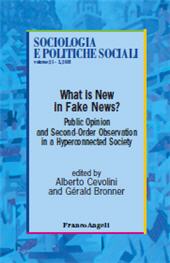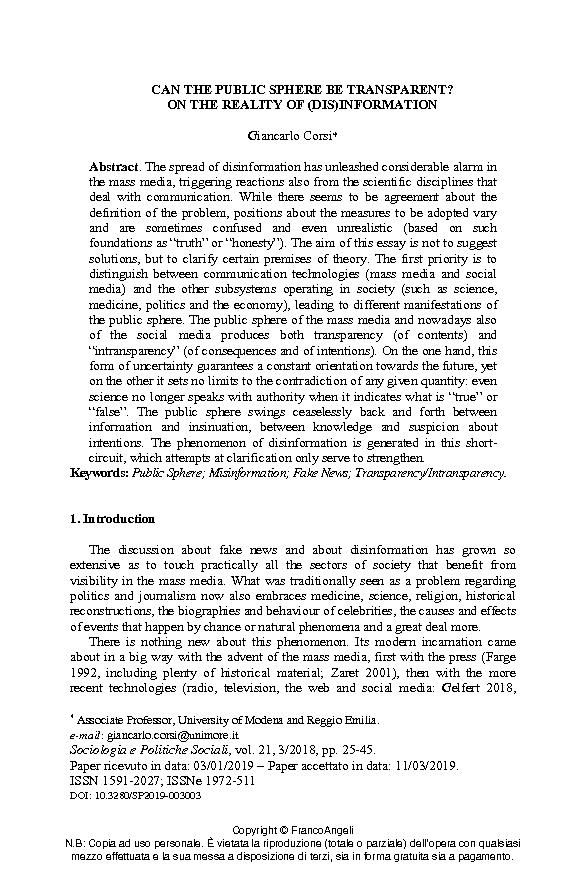Can the public sphere be transparent? : on the reality of (dis)information
25-45 p.
The spread of disinformation has unleashed considerable alarm in the mass media, triggering reactions also from the scientific disciplines that deal with communication. While there seems to be agreement about the definition of the problem, positions about the measures to be adopted vary and are sometimes confused and even unrealistic (based on such foundations as "truth" or "honesty"). The aim of this essay is not to suggest solutions, but to clarify certain premises of theory. The first priority is to distinguish between communication technologies (mass media and social media) and the other subsystems operating in society (such as science, medicine, politics and the economy), leading to different manifestations of the public sphere. The public sphere of the mass media and nowadays also of the social media produces both transparency (of contents) and "intransparency" (of consequences and of intentions).
On the one hand, this form of uncertainty guarantees a constant orientation towards the future, yet on the other it sets no limits to the contradiction of any given quantity: even science no longer speaks with authority when it indicates what is "true" or "false". The public sphere swings ceaselessly back and forth between information and insinuation, between knowledge and suspicion about intentions. The phenomenon of disinformation is generated in this short-circuit, which attempts at clarification only serve to strengthen. [Publisher's text].
Is part of
Sociologia e politiche sociali : 3, 2018-
Articles from the same issue (available individually)
-
Information
ISSN: 1972-5116
KEYWORDS
- Public Sphere, Misinformation, Fake News, Transparency/Intransparency



